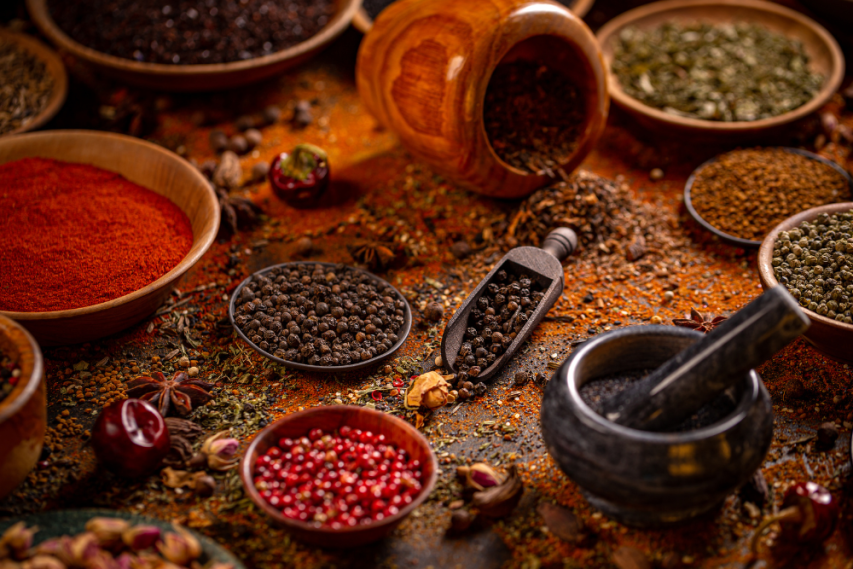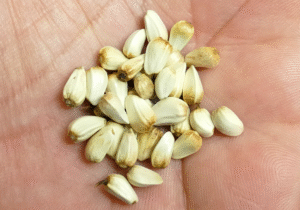Spicing Up the Market: Trends in Global Spice Consumption & Product Innovation
- Published On Jan 09, 2025

Centuries ago, black pepper was so valuable that it served as a form of currency in Europe. Today, spices still power a vast global trade—though now they appear in everything from fast-food blends to artisanal sauces. As consumer tastes expand and innovation in flavour technology accelerates, the spice sector stands at the forefront of culinary evolution.
For B2B manufacturers, this evolution presents both exciting growth opportunities and complex challenges: maintaining consistent quality at scale, navigating sustainability concerns, and keeping pace with global flavour trends. In this blog, we’ll explore the rising demand for spices, discuss key product innovations, and show how Sun Impex stands ready to help you seize new possibilities in this ever-intensifying market.
The Global Spice Renaissance
Expanding Palates, Expanding Markets
Historically, spices were symbols of status and wealth. Today, spicy flavours have become mainstream, fueled by globalised cuisine and adventurous consumers eager to explore multicultural dishes. Dishes like peri-peri chicken, harissa-based stews, and Thai chili curries are finding their way into Western kitchens and restaurant menus, introducing new heat levels and flavour profiles.
Key Drivers:
- Culinary Tourism: Travel shows, food blogs, and social media platforms inspire consumers to recreate restaurant-quality global dishes at home.
- Health & Wellness: Many spices, such as turmeric and cumin, are prized for their potential anti-inflammatory or digestive benefits.
- Convenience & Customization: Brands now offer ready-to-use spice blends or sauce kits, allowing time-pressed home cooks to replicate global flavours swiftly.
A Look at the Numbers
Global spice consumption is on track to reach unprecedented levels, with analysts predicting continued growth over the next decade. Rising incomes and expanding middle classes—particularly in Asia-Pacific and the Middle East—are driving demand for premium-quality seasonings. Moreover, the popularity of meat alternatives, where spices play a pivotal role in adding flavour, is further boosting the sector’s overall volume.
Spotlight on Four Spice Superstars
1. Black Pepper: The King of Spices
Called the “King of Spices,” black pepper is ubiquitous yet still prized for its pungent and sharp heat. It’s a cornerstone in seasoning blends for snack foods, meat rubs, and soups. Recent innovations involve infused peppercorns—coated in exotic essences like garlic or lemon—to add an exciting twist.
2. Coriander: Subtle Yet Versatile
A gentle, citrusy seed that brings depth to curries, stews, and spice rubs, coriander is particularly popular in Mexican and Middle Eastern cuisines. Food manufacturers turn to coriander as an undertone flavour that rounds out robust ingredients like tomatoes, onions, and chillies. It’s also a staple in masala blends—elevating everything from snack mixes to plant-based soups.
3. Cumin: The Star of Smoky Flavors
Nothing delivers a rich, smoky warmth quite like cumin. Whether found in Latin American dishes or Indian curries, cumin’s unmistakable aroma can transform the simplest recipes. Many brands have begun experimenting with roasted cumin for extra nuttiness or blending it with chili to create complex, layered spice mixes for barbecue sauces and snack coatings.
4. Chilli: A Spectrum of Heat
From mild ancho to fiery bird’s eye, chilli varieties span a broad heat spectrum. Consumer interest in “scorching” sensations continues to grow, paving the way for scorching limited-edition snacks, spicy condiments, and even chili-infused chocolates. For manufacturers, balancing heat level with flavour becomes a science, requiring careful selection of chili types to suit diverse global palates.
Innovations Transforming the Spice Sector
1. Technology-Driven Consistency
Modern food safety standards demand that spice quality remains consistent across massive production runs. Cutting-edge sorting and grinding techniques—like laser cleaning or cryogenic milling—help preserve aroma, colour, and essential oils while ensuring minimal contamination. This technology also opens the door for custom granule sizes, catering to unique product formulations in everything from snack dustings to soup bases.
2. Hybrid and Flavored Blends
As consumers crave novel tastes, spice producers are blending traditional spices with unique flavour infusions. Think Sichuan pepper and lemon for a citrusy, numbing kick, or garlic chili blends for bold, punchy rubs. Brands that once specialized in a single spice now experiment with multi-layered flavour bombs. For B2B buyers, these blends offer an efficient way to deliver “chef-inspired” seasonings without investing in complex in-house R&D.
3. Clean Label and Traceability
Growing consumer scrutiny over ingredients has led to demand for clean-label spices—those that are free from artificial colours, flavours, and preservatives. Coupled with emphasis on traceability, the spice supply chain is moving toward deeper transparency about farming practices, pesticide usage, and labor conditions. Companies are introducing blockchain technology to track spices from farm to factory, ensuring authenticity and quality for buyers.
A New Era of Global Spice Sourcing
Sourcing spices in today’s market is a balancing act between global reach and local authenticity. While many brands want the prestige of Himalayan chillies or Malabar pepper, achieving steady supply and fair pricing often necessitates robust international partnerships.
Why Sun Impex Is Your Partner for Spicy Innovation
- Global Sourcing Expertise: Our team at Sun Impex scours the globe for premium peppercorns, coriander seeds, cumin, chili peppers, and more. We handle complex logistics and regulatory protocols, so you can stay focused on product development.
- Tailored Spice Solutions: Whether you need a standardized grind for high-volume snack seasoning or a custom blend that matches your in-house flavour profile, we deliver precisely what you need, when you need it.
- Quality & Consistency, Guaranteed: Sun Impex partners with reputable farmers and certified processing facilities. Every spice batch undergoes rigorous quality assurance checks, including lab testing for contaminants and strict adherence to food safety standards.
Embrace the Spice Opportunity
From black pepper’s enduring reign to the growing fascination with chili’s searing heat, spices are driving innovation and redefining global palates. Today’s consumers are more adventurous, seeking out bolder, fresher flavours—and they’re willing to pay a premium for products that deliver. For B2B manufacturers, stepping into this new era of spice consumption means investing in reliable sourcing, embracing technological advances, and leveraging creative blends that entice increasingly discerning buyers.
Sun Impex bridges the gap between time-honored spice heritage and cutting-edge product demands, delivering the quality, consistency, and innovation your business needs to stand out in a crowded market.
Recent Post
-

The Unsung Hero: Innovative Uses of Safflower Seeds in Health & Wellness
-

Why Tamarind is a Must-Have Ingredient for Food Businesses
-

Breaking Down Deionized Concentrates - Why They’re a Game-Changer for Food and Beverage
-

Sun Impex’s Eco-Commitment - Reducing Food Waste Through IQF and Canned Solutions
